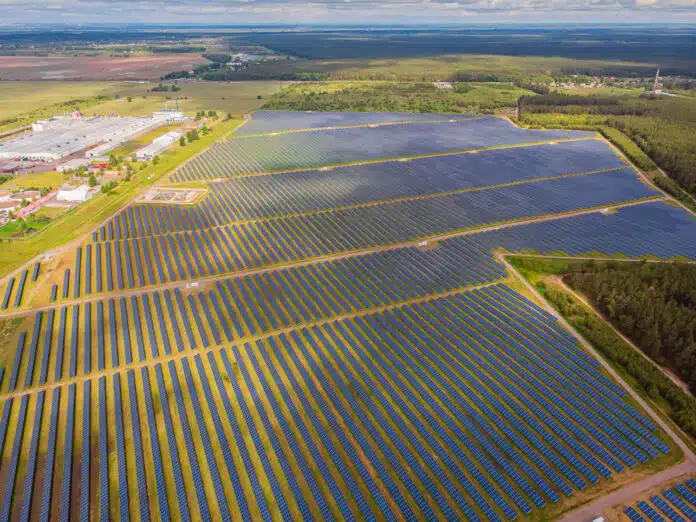
By Ashwini Sakharkar 27 Aug, 2024
Collected at: https://www.techexplorist.com/satellite-data-help-guide-plans-solar-power-plants/88677/
Harnessing renewable energy sources has become a global imperative in the face of an escalating energy crisis and the urgent need to combat climate change. Among the array of options, solar energy stands out as the frontrunner—experts predict that it could become our primary energy source well before the end of the century.
However, while solar energy offers clear advantages, it also presents some challenges. Similar to wind power, solar irradiance in a specific area can fluctuate rapidly due to weather conditions, leading to variations in power output. These fluctuations strain power grids and cast uncertainty on our ability to consistently meet energy demands.
As a result, gaining a comprehensive understanding of potential solar irradiance variations in both time and space is crucial for identifying the most suitable locations for solar power plants.
Against this compelling backdrop, a dedicated research team led by Specially Appointed Assistant Professor Hideaki Takenaka from the Center for Environmental Remote Sensing at Chiba University embarked on a mission to advance our understanding of solar irradiance across the Asia Pacific region. Their study presents a comprehensive analysis of solar irradiance data obtained from geostationary satellites.
The team, including members such as Kalingga Titon Nur Ihsan and Atsushi Higuchi from Chiba University, as well as Anjar Dimara Sakti and Ketut Wikantika from Institut Teknologi Bandung’s Center for Remote Sensing, has significantly contributed to expanding our insights into this critical area of research.
The insightful analysis was made possible by leveraging data from Himawari-8 and Himawari-9, two cutting-edge Japanese satellites renowned for their high-resolution imaging capabilities across the Asia Pacific region. The research team tapped into the remarkable AMATERASS solar radiation data, a product of meticulous real-time solar radiation analysis synchronized with geostationary satellite observations.
Developed by Dr. Takenaka and his team, AMATERASS utilizes advanced neural network algorithms to precisely estimate solar irradiance through rapid radiative transfer calculations. This operation commenced in July 2007 and has continuously archived analysis data for over 16 years. This invaluable resource, publicly available through Chiba University, CEReS DAAC, has been downloaded a staggering 186,465,724 times and has been instrumental in numerous research endeavors and Japanese national projects.

By harnessing this powerful technology, the research team successfully mapped the spatial and temporal heterogeneity in solar irradiance variability. Their meticulous analysis involved scrutinizing solar irradiance data within a 20 km by 20 km grid every ten minutes, shedding light on the dynamic fluctuations of solar radiation in both space and time.
The team’s meticulous analysis uncovered fascinating insights into solar irradiance patterns across the region. Notably, their findings revealed that areas near the equator demonstrated more consistent solar irradiance levels compared to higher latitude regions, which can be attributed to the influence of rain and cloud activity.
Furthermore, elevated regions exhibited greater variability due to increased cloud cover. Particularly striking were the significant seasonal fluctuations in the’ umbrella effect’ around the Tibetan Plateau, shedding light on the extent of solar energy reflection.
“Our evaluations based on spatiotemporal data revealed characteristics that would’ve been impossible to achieve using a traditional approach that relies on simple long-term averages or TMY (Typical Meteorological Year) as a typical solar irradiance data,” highlights Dr. Takenaka.
The research team’s findings highlight significant insights into the performance of over 1,900 existing solar power plants. Their analysis revealed that a substantial number of these plants experience suboptimal production during the summer months due to umbrella effects caused by clouds. As a result, regions heavily reliant on solar power should consider alternative energy sources to meet heightened summer demands.
Furthermore, the researchers advocated for a shift towards more widely distributed solar energy generation, emphasizing its superiority over localized efforts. This strategic approach holds immense potential for maximizing the effectiveness of future solar power plants.
“Based on the spatial and temporal characteristics of solar irradiance, we suggest that it should be possible to suppress rapid fluctuations in solar power generation output by distributing small photovoltaic systems over a wide area rather than relying on large solar power plants,” explains Dr. Takenaka. “Worth noting, these conclusions come from weather and climate research, not an engineering perspective.”
By harnessing the power of rooftop solar panels, we can take a significant step toward realizing our vision. This approach is rapidly gaining popularity in numerous countries, making it an accessible and promising solution.
The insights obtained from this study will be instrumental in shaping our strategies for the immediate and enduring advancement of solar energy generation in the Asia Pacific region. By fortifying sustainable energy technologies, we can actively contribute to the global battle against climate change.
Journal reference:
- Kalingga Titon Nur Ihsan, Hideaki Takenaka, Atsushi Higuchi, Anjar Dimara Sakti, Ketut Wikantika. Solar irradiance variability around Asia Pacific: Spatial and temporal perspective for active use of solar energy. Solar Energy, 2024; DOI: 10.1016/j.solener.2024.112678

Leave a Reply